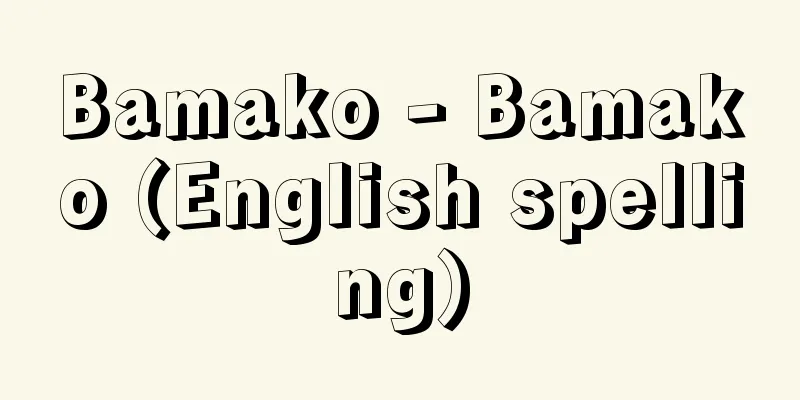Sokan - Sokan

|
A haiku poet and calligrapher from the late Muromachi period. Although it is unclear because there are no reliable biographical documents, according to the "Kokkei Taiheiki" and other sources, he was born in Omi and was a samurai named Shinayasaburo Norishige. At the age of 25, he followed the Shogun Ashikaga Yoshihisa in attacking Omi Shugo Sasaki Takayori, but when Yoshihisa died in the battle, he shaved his head and retired to Amagasaki in Settsu. He had a deep respect for Ikkyu, and apparently stayed for a while at Shuon-an in Takigi, Yamashiro (Kyoto Prefecture), which is associated with Ikkyu, where he competed in haikai (initial verse) with the renga master Socho (Socho Notebook). As he was commonly called Yamazaki Sokan, he lived in a hermitage in Yamazaki in his later years, where he taught renga to the local people and made a living by copying and distributing classics and haiku works. His distinctive style of calligraphy was called the Sokan school, and he had many followers. There are countless anecdotes about his wildness, such as that he sold oil bottles, or that he had a sign hanging in his hermitage that read, "High-ranking guests go home, middle-ranking guests go for the day, and low-ranking guests stay overnight." Such an unrestrained life is condensed in his self-praise in "The wind is cold, and the shoji screen is torn, in the month of Kannazuki" (hanging in "Kami-nashi"). He practiced renga from a young age, and a renga pocketbook written by Sokan, in which he participated in a troupe with Sogi, has been handed down, so it is judged that he was quite skilled, but his witty and open-minded personality allowed him to show his true talent in haiku. The "Heikai Renga Sho" that he compiled during his lifetime became known as "Inu Tsukuba Shu" (Inu Tsukuba Collection), and he and Moritake were given the title of founder of haiku. [Sadahiko Kato] The cuckoo cries out in the sleepy night "Yamazaki Sokan Biography" by Ichiro Yoshikawa (1955, Yotokusha) "Yamazaki Sokan Biography" by Sanshigo Kimura (included in "Haiku Lecture 2: Haiku Poets Biographies, Vol. 1" 1958, Meijishoin) [Reference] |Source: Shogakukan Encyclopedia Nipponica About Encyclopedia Nipponica Information | Legend |
|
室町後期の俳人、書家。確実な伝記資料が伝わらないのではっきりしないが、『滑稽(こっけい)太平記』などによると近江(おうみ)の産で、支那弥三郎範重(しなやさぶろうのりしげ)と名のる武士であった。25歳のとき、将軍足利義尚(あしかがよしひさ)に従い近江守護佐々木高頼を攻めたが、義尚が陣中で没したため剃髪(ていはつ)し、摂津の尼崎(あまがさき)に隠遁(いんとん)したという。一休を敬慕すること厚く、しばらく一休ゆかりの山城(やましろ)(京都府)薪(たきぎ)の酬恩庵(しゅうおんあん)に滞留していたらしく、そこで連歌師宗長(そうちょう)と俳諧(はいかい)(前句付(まえくづけ))に腕を競ったことはよく知られている(『宗長手記』)。俗に山崎宗鑑とよばれるように、晩年は山崎に庵(いおり)を結び、地元の人々の連歌を指導したり、古典や俳諧作品などを書写して頒(わか)ち、口を糊(のり)した。その癖のある筆法は宗鑑流とよばれ、追随者を出している。油筒(ゆとう)を売っていたとか、「上(じょう)の客立ち帰り、中(ちゅう)の客其(そ)の日帰り、下々(げげ)の客泊りがけ」と書いた額を庵に掛けていたとか、彼の風狂ぶりを伝える逸話には事欠かない。そうした飄逸(ひょういつ)の境涯は、「風寒し破れ障子の神無月(かみなづき)」(「紙無」に掛ける)の自画賛に凝縮されている。若いころから連歌をたしなみ、宗祇(そうぎ)とも一座した宗鑑筆の連歌懐紙(かいし)が伝わり、かなりの手練であったと判断されるが、洒脱磊落(しゃだつらいらく)なひととなりから俳諧に本領を発揮した。生前に編んだ『誹諧連歌抄』は『犬筑波集(いぬつくばしゅう)』の名で流布し、守武(もりたけ)ともども俳諧始祖の称を与えられることになった。 [加藤定彦] うづきゝてねぶとに鳴くや郭公(ほととぎす) 『吉川一郎著『山崎宗鑑伝』(1955・養徳社)』▽『木村三四吾著「山崎宗鑑」(『俳句講座2 俳人評伝 上』所収・1958・明治書院)』 [参照項目] |出典 小学館 日本大百科全書(ニッポニカ)日本大百科全書(ニッポニカ)について 情報 | 凡例 |
>>: Giant tortoise (Elephant turtle) - Giant tortoise (English spelling)
Recommend
Insurable interest - hihokenrieki (English spelling)
The original purpose of the non-life insurance sy...
Chionis minor (English name) Chionisminor
… [Shinji Takano]. … *Some of the terminology tha...
Demon firewood white candy - Kishin Hakusan
...However, as seen in the proclamation of the ab...
Onikombu - Onikombu
...The giant kelp, which grows on the Pacific coa...
Warwick, D.
…He won an Academy Award in 1969 for the original...
Amphiblastoma
…The fertilized egg undergoes cleavage, and when ...
Epidermis - Hyohi
This refers to the cell layer that covers the sur...
November Steps
This work for biwa, shakuhachi and orchestra by To...
Large ginkgo flower - Large ginkgo flower
...Distributed in Hokkaido and Honshu. Nipponicus...
socialisme autogestionnaire (English) socialisme autogestionnaire
…Official name: French RepublicRépublique françai...
Kashiba [city] - Kashiba
A city in the western part of the Nara Basin in Na...
Navier, LMH (English spelling) NavierLMH
…Despite these flaws, the theory of perfect fluid...
Morskaya pekhota (English spelling) Morskayapekhota
…The U.S. Marine Corps belongs to the Department ...
Overall Review - Souhyo
[Noun] (suru) To criticize something in its entire...
rubber
…Therefore, in the broad sense, mortar refers to ...









